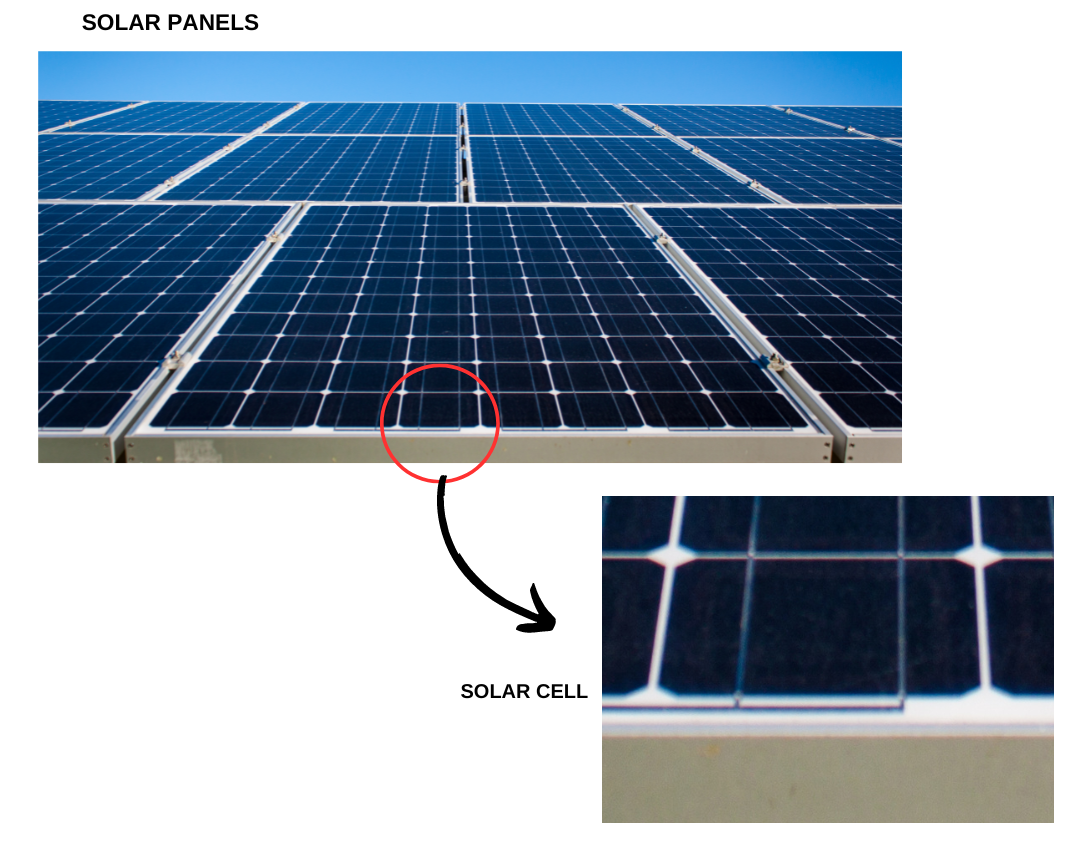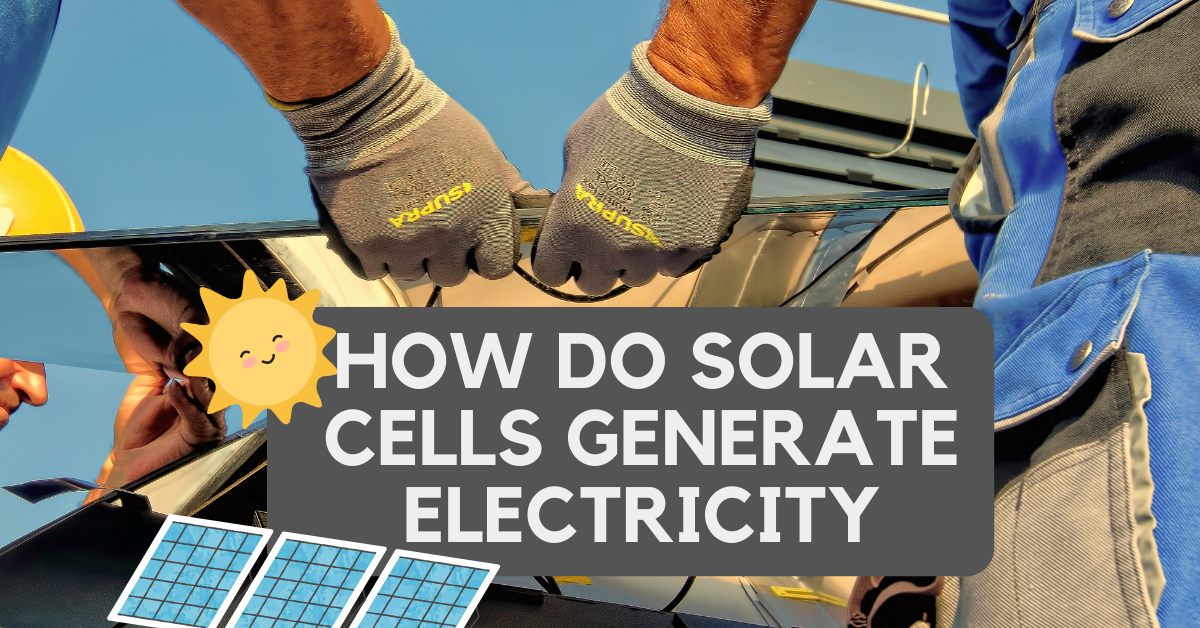In this article, we will explore the process of how do solar cells generate electricity, explained in a simple and understandable way for everyone. So, let’s dive right in and begin our learning journey.
Solar energy is harnessed from the sun’s rays and converted into electricity. The sun’s rays contain photons, which, when they strike a solar module, cause electrons within it to move, generating an electrical current. Below is a simplified explanation on how solar cells work.
What Solar Cells Are Made Of
Solar panels consist of smaller units known as solar cells.

The most common type of solar cells is made from silicon, which is a semiconductor and the second most abundant element on Earth. Why? Because these came from sand.
By undergoing complex purification they are converted to pure silicon crystals. This raw silicon is converted into a gaseous silicon compound and then combined with hydrogen to produce highly purified polycrystalline silicon. These silicon ingots are shaped into thin slices called silicon wafers, forming the heart of a photovoltaic cell.
How Do Solar Cells Generate Electricity
In a solar cell, crystalline silicon is positioned between conductive layers, and silicon atoms are bonded together, restricting their movement hence preventing the flow of current. Then how do these cells produce current?
The key lies in using two different layers of silicon in a solar cell:

By the process of doping, the first layer of silicon is injected with phosphorus atoms with five electrons.

This will make an electron set free making movement possible when they gain photon energy. This is called the N-Type silicon. The other layer, again by doping, we introduce boron which has only three valence electrons creating one hole for each atom. This is now called the P-Type silicon.

When these doped materials are joined together, electrons from the N side migrate to the P region, filling the holes.

But as these electrons migrate to the other side, and free electrons fill the holes, this creates a depletion region. This is where there are no more free electrons and holes. What will happen? Excited electrons are attracted and swept in the positive direction, while holes move in the negative direction. The N-side will be positively charged and the P side will be negatively charged. And between these charges an electric field will be formed.

When Sunlight hits the Solar Cells
In summary, when light strikes the PN junction, electron-hole pairs are generated in the depletion region.

Due to the electric field, electrons and holes move out of the region.

This movement creates a potential difference between the N and P regions.

Metal fingers at the top of the cell collect the mobile electrons, and they flow through an external circuit. When a load is connected, electrons flow through the load, recombining with holes in the P region, producing continuous direct current. Electrons can’t go backward, forcing them to travel through the external circuit to recombine with a hole instead of dissipating their energy as heat inside the cell.

In practical solar cells, the top N layer is heavily doped and thin, while the P layer is lightly doped and thick, optimizing performance. While each silicon cell generates only half a volt, they can be connected in modules to produce more power.
The PV cells are interconnected to form a solar panel. Series and parallel connections increase current and voltage to usable levels.
This electricity then travels from the solar array to an inverter, which transforms it from direct current (DC) to alternating current (AC), making it ready for household use. The power is fed into the building’s main electrical panel, providing electricity to the site. If the site requires more power than the solar panels can provide, it draws from the utility grid. On the other hand, if the solar panels produce excess energy, it is sent back into the grid, resulting in a credit through a process called net metering.
Final words to think about.
In conclusion, solar cells are a wonderful source of renewable energy for homes and communities. They have no moving parts, like electrons, which makes them last for many decades without wearing out or depleting. Even though the initial cost might be high, the long lifespan and minimal maintenance needed make solar energy one of the best choices for sustainable power. Alongside numerous other advantages, it proves to be an excellent and eco-friendly option for a brighter and cleaner future

